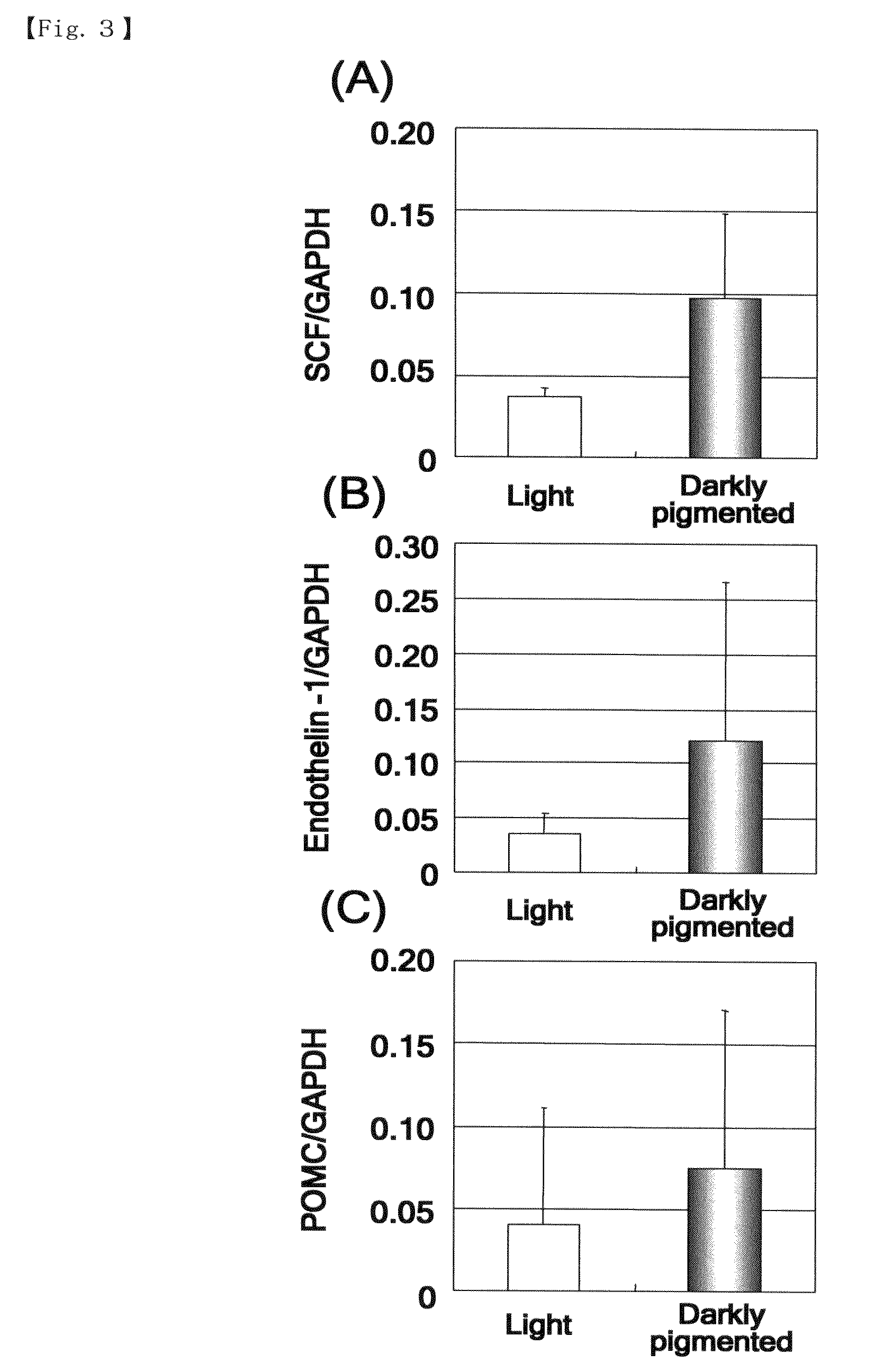Animal model for hyperpigmentation
a hyperpigmentation and animal model technology, applied in the field of animal models for the evaluation of skin hyperpigmentations, can solve the problems of cosmetically troubling hyperpigmentation formation, pigmentation deposition, evaluation,
- Summary
- Abstract
- Description
- Claims
- Application Information
AI Technical Summary
Problems solved by technology
Method used
Image
Examples
example 1
[0041]1. Method of Preparing Grafted Skin and Changes in the Darkly Pigmented Part Over Time
[0042]Foreskin derived from African descent was obtained from the University of Cincinnati Hospital and Christ Hospital, and then immediately washed with phosphate buffered saline (PBS). Then, the foreskin was trimmed to a suitable size (about 1.5 cm×1.5 cm to about 2.0 cm×2.0 cm). Until transferred to an animal facility, the foreskin was immersed in Dulbecco's Modified Eagle's Medium (DMEM) containing L-glutamine and antibiotic / antimycotic (Invitrogen, Calif.).
[0043]Four to six-weeks old female SCID mice (Taconic, N.Y.) were housed in an animal facility in Cincinnati Children's Hospital (Cincinnati Children's Hospital Medical Center, Cincinnati, Ohio), in a specific pathogen-free condition from the beginning to the end of the experiment.
[0044]After acclimation of about 1 week, the mice were anesthetized in a box containing isofluorane / oxygen (3% / 0.8 liter) and the mice were shaved on the dor...
example 2
[0055]In accordance with the method mentioned above, evaluation of screening of hyperpigmentation formation suppressant or hyperpigmentation remover was conducted by use of mouse model for evaluating hyperpigmentations in which foreskin derived from African descent was grafted onto the back of imminodeficient mice and six months were passed thereafter.
[0056]A PBS solution containing 10 μM s-kit (R&I) systems) (hereinafter, referred to as s-kit) as the hyperpigmentation formation suppressant, and PBS free of s-kit (hereinafter, referred to as PBS) was used as control. It is known that the s-kit suppresses signal of SCF (D. D. Dahlen et al., Leukemia Research 25 (2001) 413-421) and has an action of hyperpigmentation formation suppression or hyperpigmentation removal.
[0057]To the darkly pigmented parts of the grown-up skin of model mice ,25 μL of 10 μM s-kit (R&D systems) by three times per one week was administered subepidermaly, and photography and skin lightness (L*value) of the ski...
PUM
 Login to View More
Login to View More Abstract
Description
Claims
Application Information
 Login to View More
Login to View More - R&D
- Intellectual Property
- Life Sciences
- Materials
- Tech Scout
- Unparalleled Data Quality
- Higher Quality Content
- 60% Fewer Hallucinations
Browse by: Latest US Patents, China's latest patents, Technical Efficacy Thesaurus, Application Domain, Technology Topic, Popular Technical Reports.
© 2025 PatSnap. All rights reserved.Legal|Privacy policy|Modern Slavery Act Transparency Statement|Sitemap|About US| Contact US: help@patsnap.com



